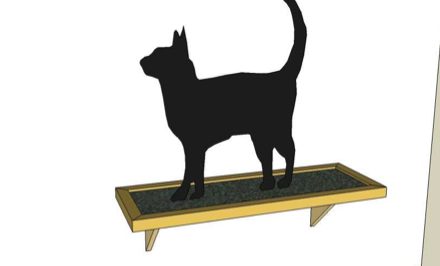Safe Happy Cat

Many cat owners let their cat outdoors to explore. But outside is a very dangerous place! Just like dogs, cats need supervision to be protected from traffic, other cats and animals, toxins and poisons, and the many diseases and parasites they can catch, not to mention getting lost.
Diseases affecting outdoor cats include feline leukemia, FIV and distemper, among others. Parasites include fleas, ticks, earmites and intestinal worms. Many toxins, such as antifreeze and rat poison, taste good to cats, and they can be poisoned if they simply drink from a puddle. Add the threats of stray dogs, raccoons, coyotes and cars, and the outdoors are a recipe for kitty disaster!
Another reason to keep your cat from roaming freely unsupervised is to stop her from killing wildlife. Several studies suggest domestic cats kill millions of birds every year, and Canada’s bird populations are already under stress from the impacts of climate change and habitat loss.
The good news is that with a little effort on your part, your cat can have everything she needs to be safe, happy and fulfilled, without leaving her to face the dangers of the outdoors alone.
Here are some tips to help you keep your cat safe and happy:
• Have your cat spayed or neutered, preferably before 6 months of age. This will reduce the risk of several health problems, minimize offensive spraying or other territorial behaviour, and prevent your cat from contributing to the tragic problem of pet overpopulation. Contrary to popular opinion, having a litter of kittens does not benefit the mother’s health, and in fact puts her at higher risk of certain cancers.
• Trim your cat’s claws once every week or so. Any vet can show you how. This will reduce the need for scratching. Note that scratching is a natural behaviour, however, and provide surfaces that your cat is allowed to scratch (see scratching posts, below).
• Provide safe outdoor access: This can be as simple as a screened-in porch or enclosed balcony, or a customized cat enclosure, ‘catio’, or a specially fenced area of your backyard. Make sure the area is sufficiently enclosed that the cat can’t escape. If creating an outdoor cat environment is impractical, you can train your cat to wear a harness. This is easiest if you begin when the cat is young. Allow her to get used to the harness by wearing it for a few hours a day before taking her outside. Stay close to your cat and away from traffic and other loud noises. Be prepared to dawdle at your cat’s pace, and don’t pull on the leash. Never leave your cat unattended on a leash. Read more about Safe Outdoor Options or download that resource here.
• Consider getting your cat a playmate, especially if you work long hours. This generally works better for younger cats – not all cats appreciate having another cat around -– but it can also enhance the quality of life of some older, more sociable cats.
• Enrich your cat’s environment: The more opportunities for stimulation you give your cat, the less they’ll want to go outside to seek excitement there.
• A window perch: place a cat shelf right next to a properly screened and secured window, allowing your cat to survey the great outdoors from the safety of home.
• Cat furniture: Cat trees, cat gyms and cat condos provide your cat with stable places to climb and perch, adding more space to her territory. Cats especially like height, and providing them with a climbing surface increases the size of their territory.
• Scratching posts: Scratching is a natural behaviour for cats, serving to help them remove the dead outer layer of their claws, to mark their territory, to stretch and to work off surplus energy. Observe where your cat scratches — a soft or hard surface? vertical or horizontal? your new couch or your new carpet? — and choose or build a scratching post that most resembles their preference. If your cat is scratching inappropriate objects, cover them with something the cat will find unappealing, such as double-sided tape, aluminum foil, or sheets of sandpaper. Place the new scratching post near the inappropriate one, and let both remain there until your cat is consistently using the new post. After a few weeks, the coverings on the inappropriate objects can be gradually removed. If none of that works, nail caps such as Soft Claws are a good alternative.
• Cat toys: Try a variety and see which ones your cat prefers. Store the toy collection out of sight and give your cat a few at a time. Rotate them every few days to provide variety and keep your cats interest. There are lots of interactive and puzzle toys that can be especially effective, but a simple cardboard box or a paper bag can provide hours of kitty entertainment! Food puzzles are a particularly great toy, especially if your cat tends to wolf their food. You can also hide toys for the cat to find on her own.
• Interactive play is a great way to keep your cat entertained while strengthening the bond between you. By encouraging her to leap and pounce and run around the house, you help your feline stay fit. For tips on starting to train your cat to do tricks, read more about Cat Training Basics or download the resource here.
• Try catnip and see if your cat responds – not all cats do. If she does, use it in toys or just sprinkle it around occasionally. Sometimes honeysuckle works for cats that don’t respond to catnip. Cat grass (also known as oat grass or wheat grass) is another way to bring a little of the outdoors inside.
Download a pdf of Safe Happy Cat.











